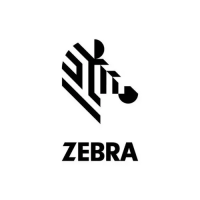
Do you have a question about the Zebra ZE500 and is the answer not in the manual?
| Print technology | - |
|---|---|
| Maximum resolution | 300 x 300 DPI |
| Maximum printing width | 168 mm |
| Wi-Fi | No |
| Ethernet LAN | Yes |
| USB 2.0 ports quantity | USB 2.0 ports have a data transmission speed of 480 Mbps, and are backwards compatible with USB 1.1 ports. You can connect all kinds of peripheral devices to them. |
| Connectivity technology | Wired |
| Parallel ports quantity | 1 |
| Flash memory | 64 MB |
| Internal memory | 16 MB |
| Built-in barcodes | 1D, 2D, CODABAR (NW-7), Code 129-Auto, Code 39, Code 49, Code 93, EAN13, EAN8, Industrial 2/5, Interleaved 2/5, MaxiCode, PDF417, POSTNET, QR Code, TLC39, UPC-A, UPC-E |
| Processor frequency | 133 MHz |
| Page description languages | XML, ZPL, ZPL II |
| Display | LCD |
| Product color | Black |
| Housing material | Metal |
| Core diameter | 25.4 mm |
| Ribbon length | 600 m |
| Maximum label width | 180 mm |
| Maximum media length | 3810 mm |
| Sustainability certificates | ENERGY STAR |
| Storage temperature (T-T) | -40 - 71 °C |
| Operating temperature (T-T) | 32 - 104 °F |
| Storage relative humidity (H-H) | 5 - 95 % |
| Operating relative humidity (H-H) | 20 - 85 % |
| Harmonized System (HS) code | 84433210 |
| Depth | 438 mm |
|---|---|
| Width | 245 mm |
| Height | 300 mm |
| Weight | 17300 g |
Information on how to reach Zebra support through various channels.
Explains symbols, formatting, and language used in the manual for clarity.
Describes left-hand and right-hand configurations of the print engine.
Identifies the parts within the print engine's media compartment.
Explains the functions of buttons, lights, and the display for user interaction.
Details settings like darkness, speed, and slew for optimal print quality.
Describes different media types and provides guidelines for ribbon usage.
Instructions for unpacking, storing, and shipping the print engine.
Guides on mounting the print engine into an applicator and necessary requirements.
Explains connection options for linking the printer to a computer or network.
Step-by-step guide for loading supplies into the print engine.
Overview of methods to modify printer configurations using ZPL, control panel, or web pages.
Adjustments for darkness, speed, slew, and backfeed for optimal printing.
Configuration of IP addresses, subnet masks, gateways, and network protocols.
Selecting and adjusting media sensors for accurate media detection.
Configuring serial and parallel communication parameters like baud rate and parity.
Procedure to adjust sensor sensitivity for media/ribbon detection.
Fine-tuning printhead pressure for optimal print quality and longevity.
Recommended intervals and methods for cleaning various print engine parts.
Detailed steps for cleaning critical print components like the printhead and rollers.
Information on ordering and replacing worn-out parts like the printhead or platen roller.
Identifies common printing problems, their causes, and recommended solutions.
Lists issues related to ribbon usage, such as breaking, slipping, or wrinkling.
Explains error codes displayed on the control panel and troubleshooting steps.
Addresses issues with data transfer, connectivity, and unrecognized label formats.
Covers less common problems not falling into other categories, like display issues.
Describes the automatic test performed when the engine is powered on.
Explains tests triggered via control panel buttons like CANCEL, PAUSE, and FEED.
A tool to check the interconnection between printer and host computer.
Prints sensor readings to troubleshoot media detection issues.
Provides physical, electrical, and environmental data for the printer models.
Details print resolution, dot size, maximum print width, and print speeds.
Information on ribbon width, length, and maximum roll size.
Requirements for media types, width, thickness, and inter-label gaps.
Lists necessary tools for reconfiguring the interface board.
Steps to switch between internal and external power modes by adjusting jumpers.